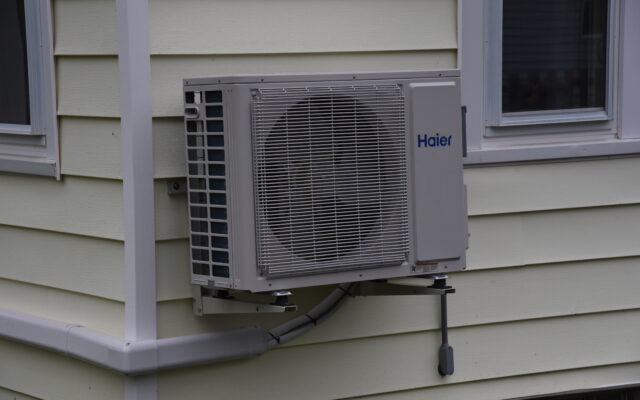
How Mainers can save money in 2023 by going green
By Lori Valigra, Bangor Daily News Staff
The new year will bring savings for Mainers who want to switch to clean energy under the $739 billion Inflation Reduction Act passed by Congress in August.
The act also is known as the largest climate bill in U.S. history, with more than $300 billion in investments in energy and climate change policies, primarily through tax incentives for Americans from making electric cars more affordable to tax credits making homes more energy efficient.
Mainers who take advantage of all of the programs can qualify for $10,000 or more in rebates and tax credits. You also can check out the savings calculator on the website Rewiring America, a clean energy think tank, to see your potential individual savings.
Here are the available savings Mainers could get.
Electric vehicle tax credit
Starting on Jan. 1, consumers can get a tax credit of up to $7,500 to buy an electric vehicle, with caveats that include the price of the vehicle and the battery it uses. Used vehicles may qualify for up to a $4,000 credit.
The clean vehicle credit would help defray the cost of an electric vehicle, which typically is a few thousand dollars pricier than a gas car. Tax credits are subtracted from the amount of federal taxes you owe. You pay the full price when purchasing the vehicle, and the government pays you back at tax time.
But future requirements in the act to decrease or eliminate foreign-made parts in cars would disqualify vehicles from the credit if manufacturers can’t quickly meet the new obligations, so buyers need to carefully check government websites outlining which cars qualify.
The Internal Revenue Service lists qualifying criteria, and the Department of Energy lists car models that qualify and allows buyers to search by vehicle identification number.
Generally, vehicles need to be assembled in North America. Cars cannot cost more than $55,000 and vans and trucks can’t cost more than $80,000.
Electric vehicles are a key component of Gov. Janet Mills’ clean energy goals. The state needs 219,000 light-duty electric vehicles, or 1 in 6 vehicles, on the road by 2030 to curb greenhouse gas emissions by 45 percent. However, a report issued by the Mills administration last December said Maine doesn’t have enough money to meet its electric vehicle goals.
Household electrification
There are a number of upfront discounts for middle- and low-income homeowners and renters. Amounts depend on income. Discounts are taken at the time of purchase.
Smart electric panels, which manage the amount of electricity through the home, can qualify for up to a $4,000 upfront discount starting in mid-2023. Upfront discounts for your income bracket can be used to cover up to 50 percent of your total costs. For example, if your total project cost is $10,000, you can receive an upfront discount of $5,000.
Low-income households can get 100 percent of their electrical panel costs covered up to $4,000. Moderate-income households can get 50 percent covered up to $4,000.
Other upfront discounts starting mid-year include up to $840 for an electric stove and $2,500 for electric wiring. Mainers can get up to $1,800 for weatherization measures such as air sealing, ventilation and upgrades to insulation, doors and windows starting in mid-2023.
There also is a discount of up to $4,000 for whole home energy reduction measures, for example, retrofits with expected energy system savings of 35 percent or more would qualify for $4,000 or 50 percent of project costs, whichever is less.
Homeowners can continue to claim a federal tax credit of 30 percent for renewable energy investments such as rooftop solar panels. There is no cap on the amounts that can be claimed. In 2033, the credit decreases to 26 percent of the total purchase price, and in 2034 it falls to 22 percent. It will be phased out the following year.
Heat pumps
Heat pumps, which run on electricity and can both cool and warm a home, are a centerpiece of Mills’ carbon reduction strategy. The pumps can pull heat from cold outdoor air in the winter and bring it inside, and pull heat out of indoor air and expel it outside to cool the air in warmer months. One unit can handle both heating and cooling rather than needing to install separate systems.
Starting in mid-2023, the federal government is offering upfront discounts of $2,000 for a heat pump water heater, up to $8,000 for a combined heat pump and air conditioner and $840 for a heat pump clothes dryer. More information is on the Department of Energy’s website.